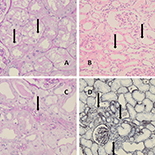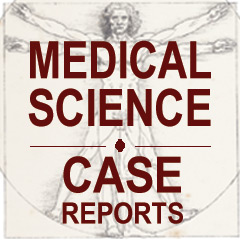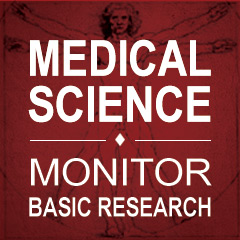Diagnostic Difficulties in a Patient with Reverse Diastolic Intrarenal Doppler Flow Caused by Tacrolimus Nephrotoxicity: A Case Report
Aureliusz Kolonko, Henryk Karkoszka, Andrzej Wiecek
Med Sci Case Rep 2015; 2:78-82
DOI: 10.12659/MSCR.896574
Available online: 2015-12-21
Published: 2015-12-21

BACKGROUND:
In the early post-transplant period, the acute presence of reverse whole-diastolic flow in the segmental arteries of a kidney graft is commonly attributed to serious venous thrombosis. If confirmed, it needs pharmacological treatment and, in most cases, also requires intravascular or surgical intervention to salvage the transplanted organ.
CASE REPORT:
We describe a patient after second kidney transplantation, who presented delayed graft function in the early post-transplant period. The clinical status and the evolution of Doppler spectrum strongly suggested the development of severe venous thrombosis, with the typical reverse plateau-like diastolic flow in the segmental arteries of the graft. Unexpectedly, kidney graft biopsy revealed typical signs of calcineurin inhibitor toxicity, despite low tacrolimus blood trough levels, and no venous thrombosis. Orthograde Doppler flow and adequate excretory graft function returned after the tacrolimus dose was significantly reduced.
CONCLUSIONS:
Plateau-like reverse Doppler intrarenal flow occurs not only in graft venous thrombosis, but may also be a consequence of calcineurin inhibitor toxicity after kidney transplantation. Therefore, the proper interpretation of kidney graft Doppler spectrum should always be made in the whole clinical setting, in order to avoid incorrect diagnosis and intervention.
Keywords: Drug-Related Side Effects and Adverse Reactions, Tacrolimus, Ultrasonography, Doppler, Color, Venous Thrombosis





